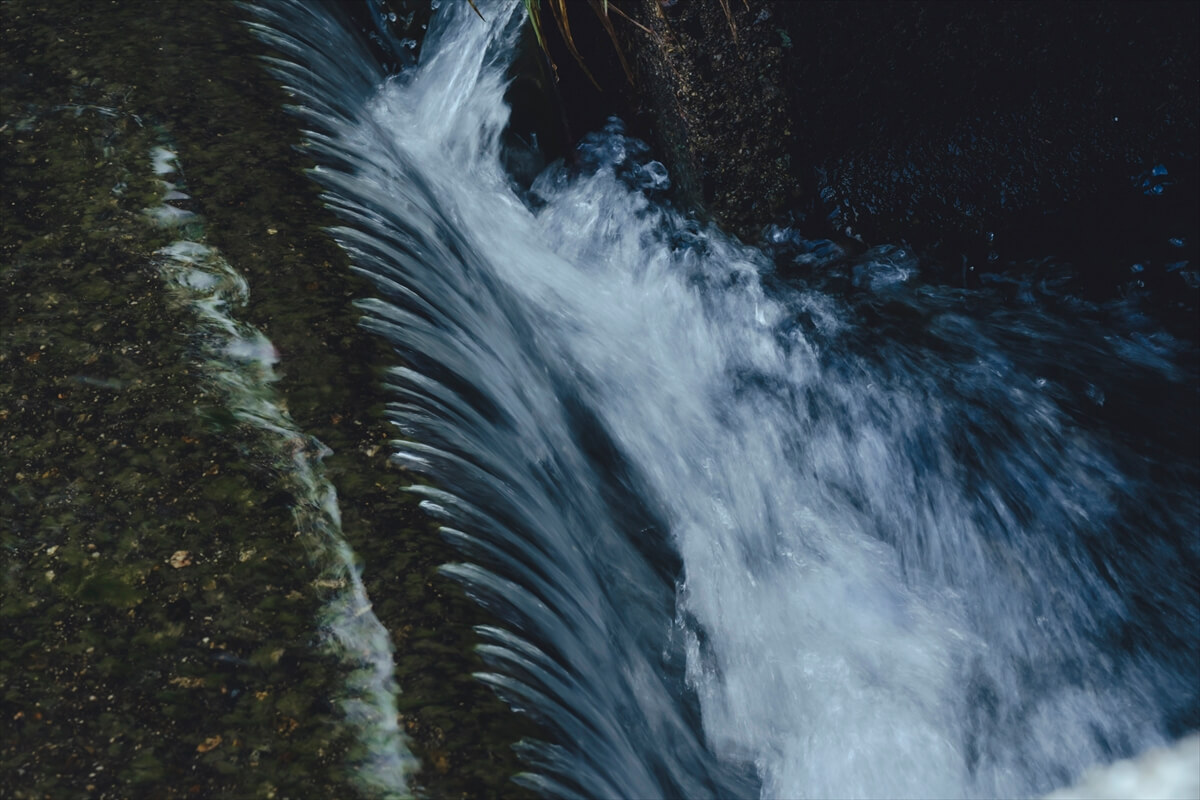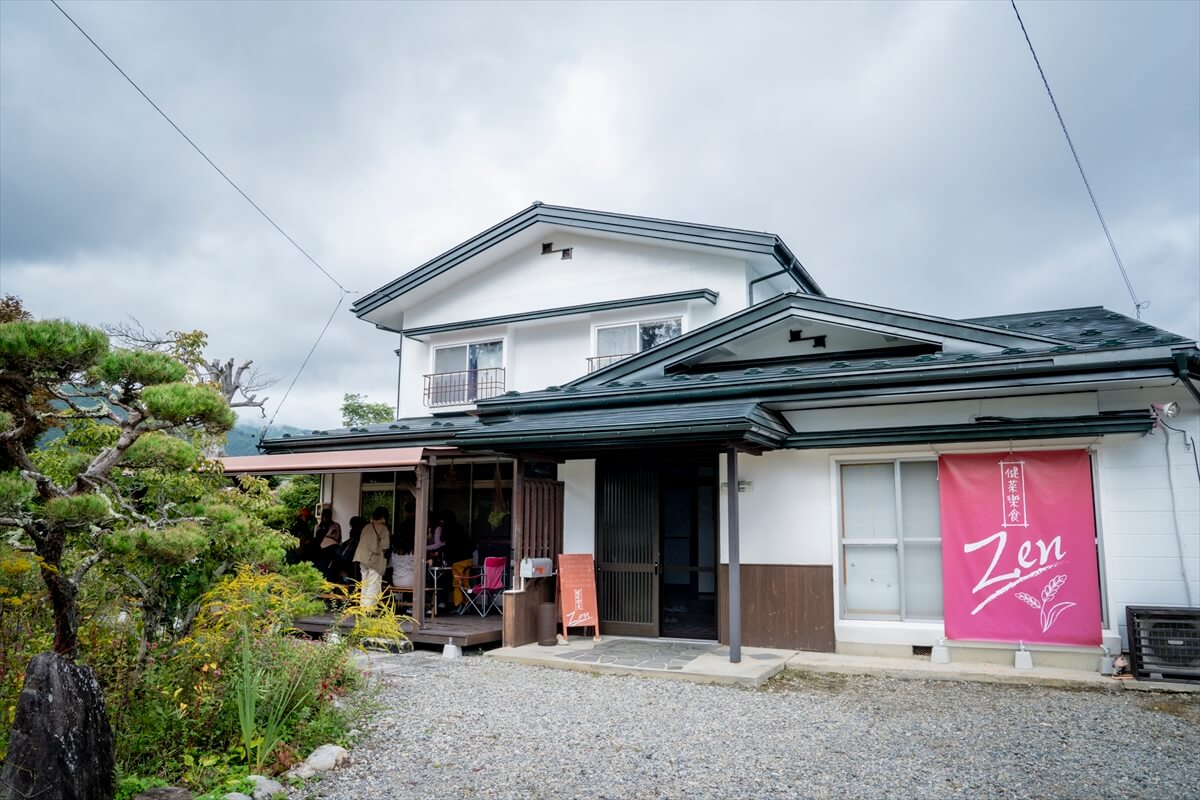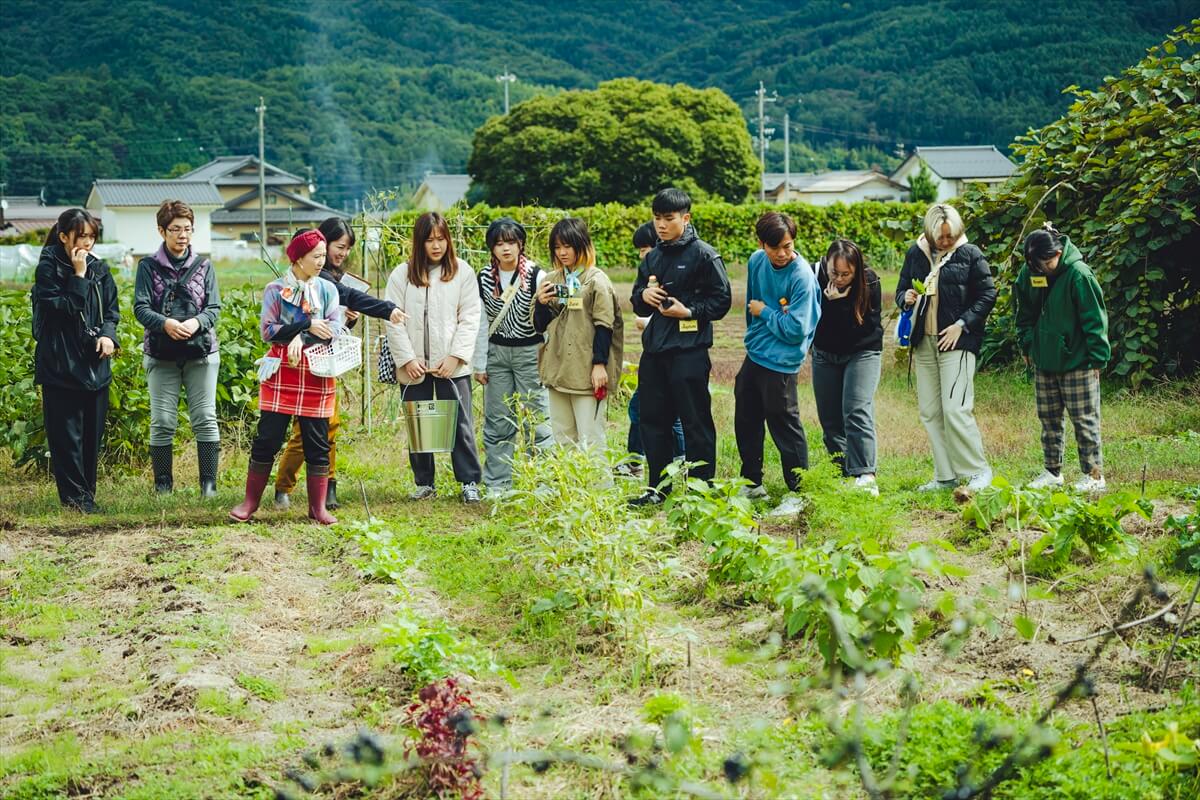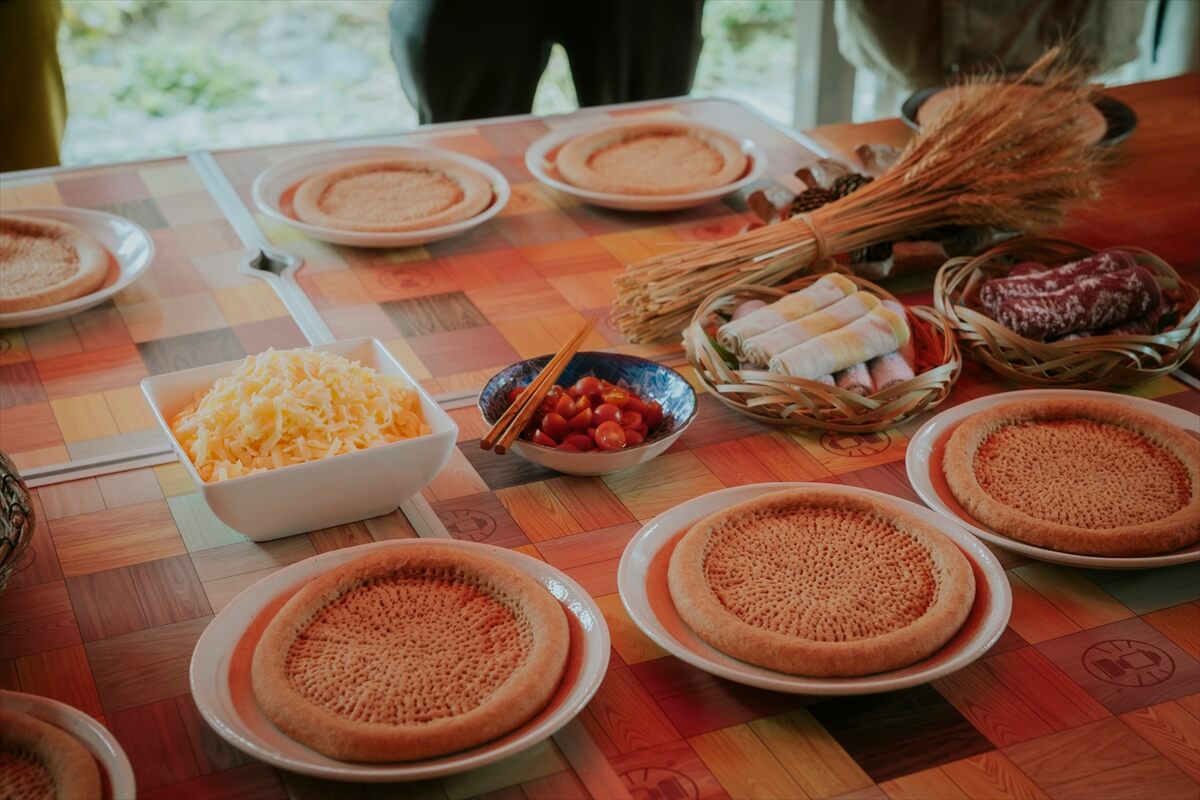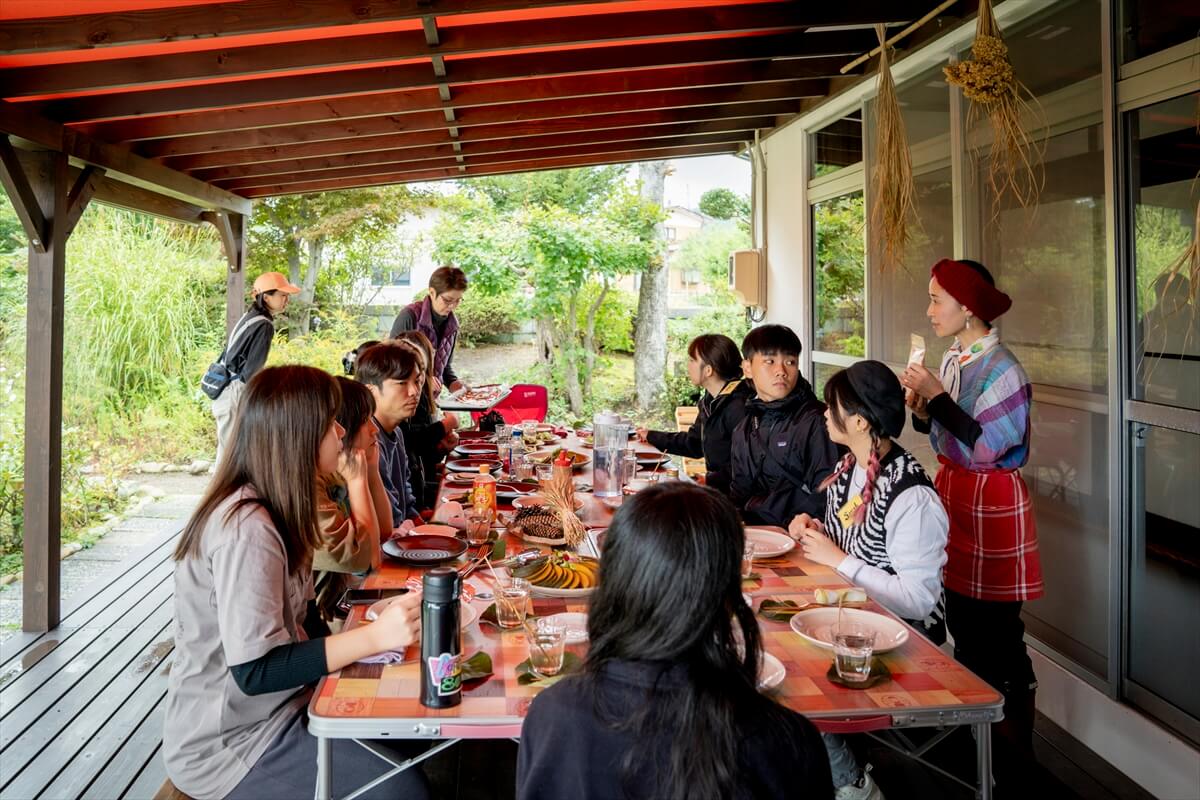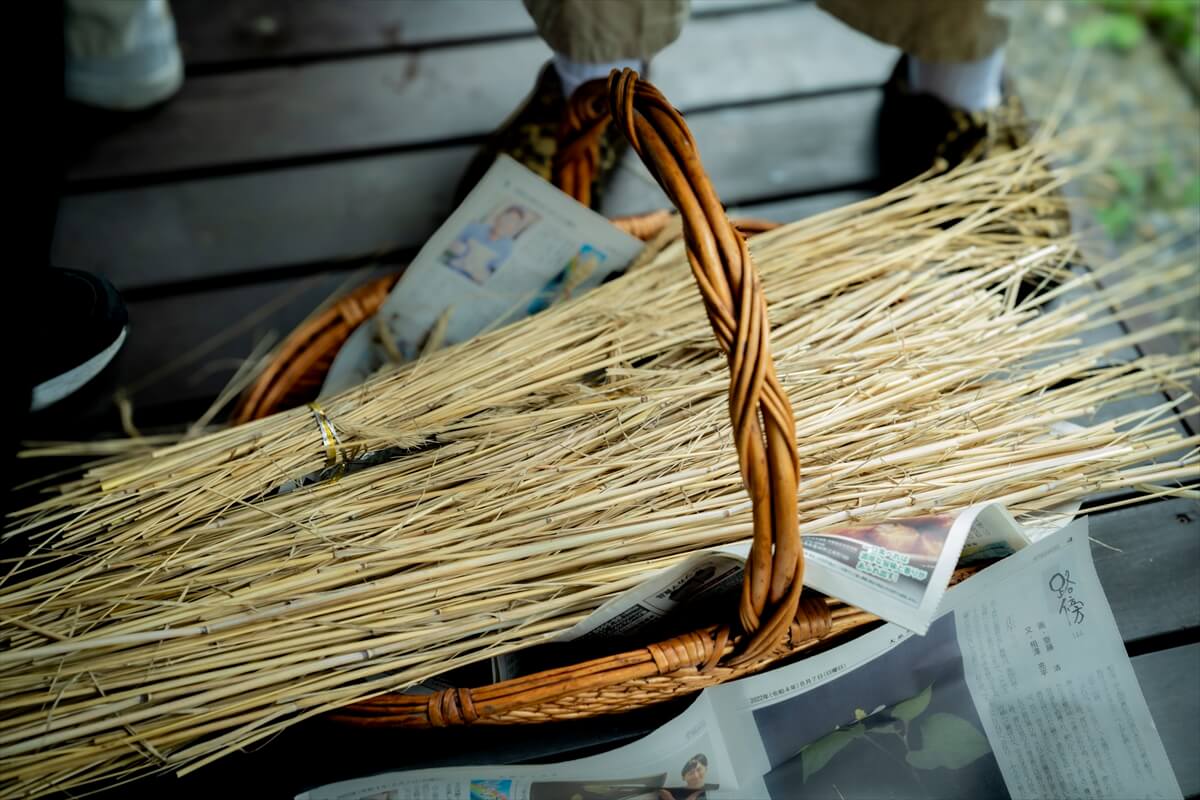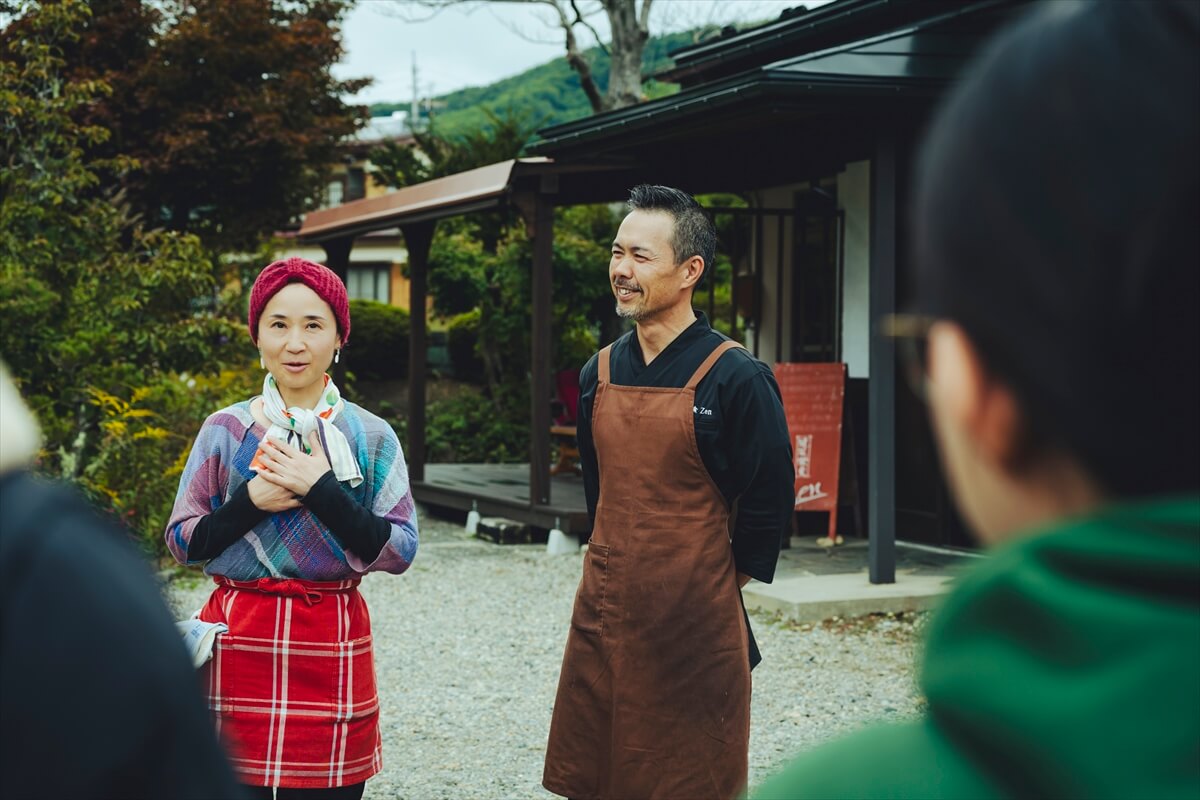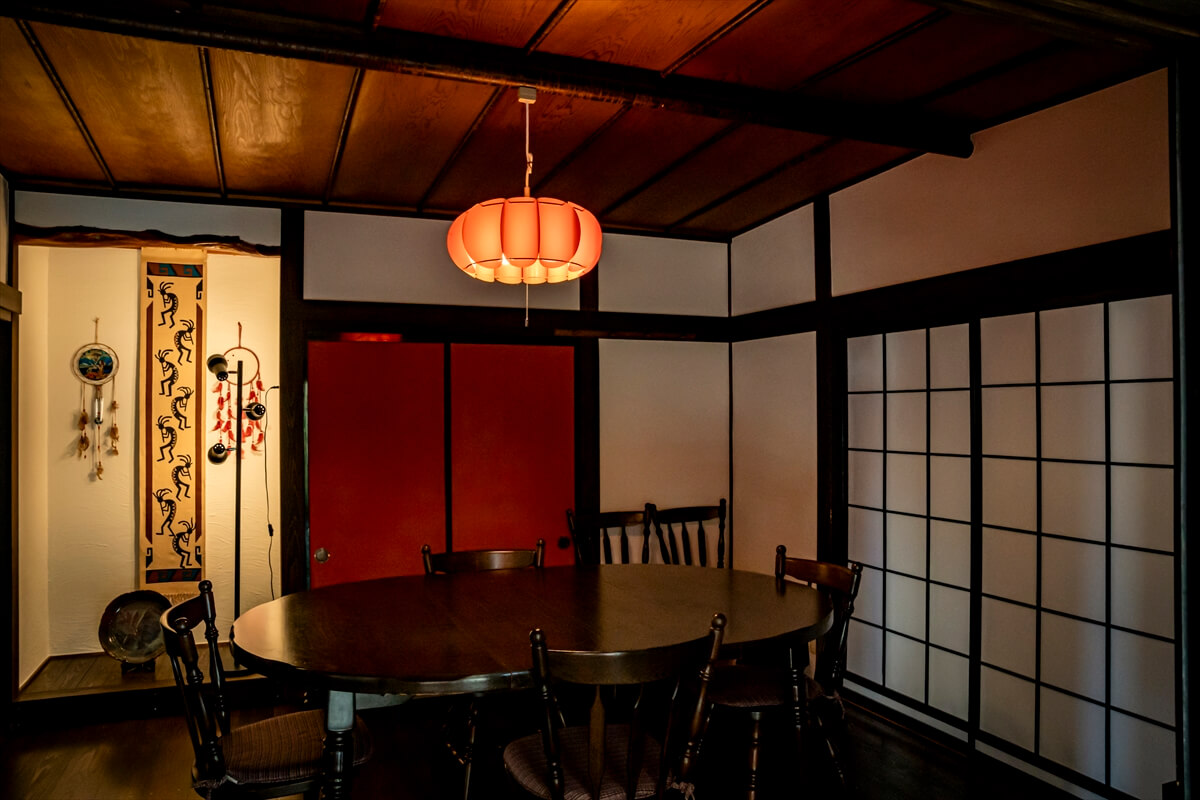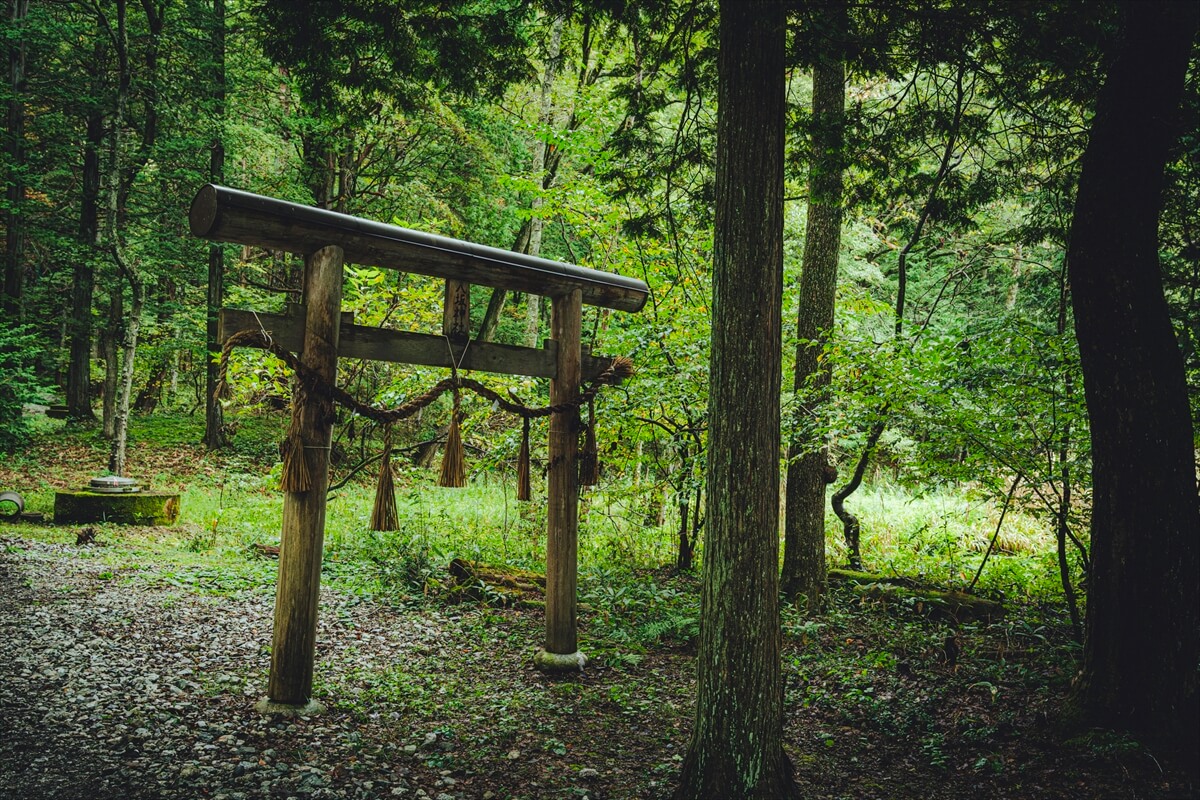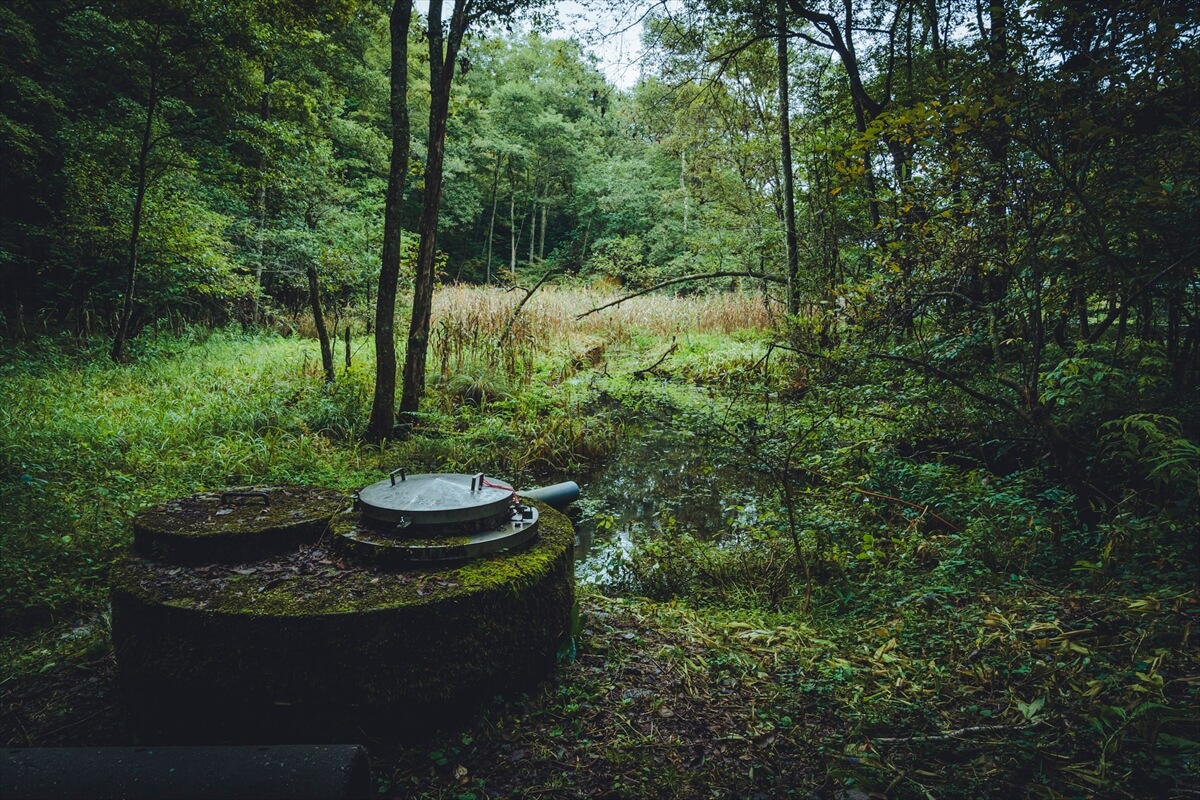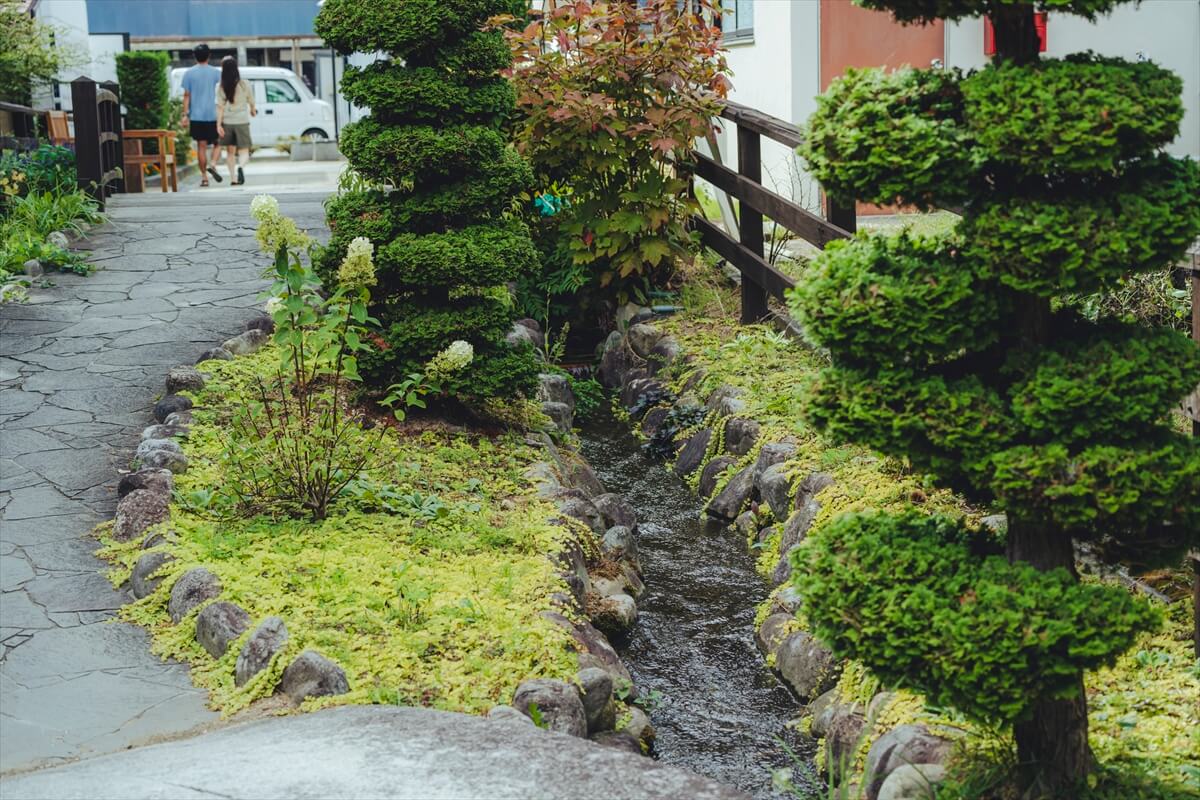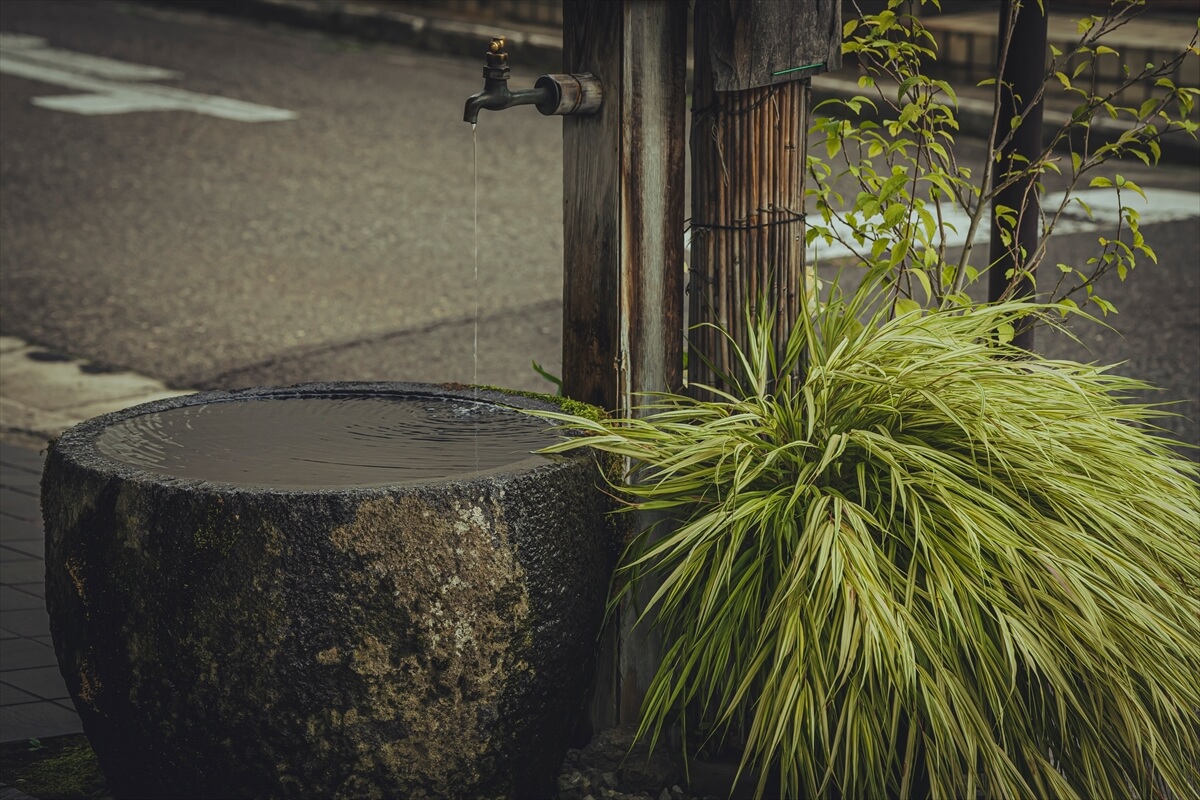Life in Omachi, where agriculture and food meets, supported by water
Life in Omachi, where agriculture and food meets, supported by water
From a lifestyle intertwined with agriculture, dishes made with whole grains and local ingredients.
From a lifestyle intertwined with agriculture, dishes made with whole grains and local ingredients.

Mr. Junji Oda and Mie Oda
Sanroku Farm Dining Kensai Gakushoku Zen

Mr. Junji Oda and Mie Oda
Sanroku Farm Dining Kensai Gakushoku Zen


Mr. Junji Oda and Mie Oda from Sanroku Farm Dining Kensai Gakushoku Zen
(zenスワイプ1〜3|2883、1897、1909)
| 無農薬栽培の畑でピザにトッピングする野菜を収穫するHarvesting vegetables from pesticide-free fields to use as pizza toppings. |
| 香港の学生に英語で自然農法の説明をする美恵さんMie explains natural farming to students from Hong Kong in English. |
Zenは全粒粉の「全」であり、膳・禅・善
など、いろんな言葉を想起させる
"Zen" is derived from the "全-whole" in whole
wheat flour, evoking various words such
as "膳-meal," "禅-Zen," and "善-goodness.
10月上旬のある日、大町市にある「山麓ファームダイニング 健菜樂食Zen」へ、香港理工大学の学生8人が視察ツアーに訪れました。Zenは、小麦の全粒粉で作る料理やお菓子を中心に、大町の食材をふんだんに味わえるお店です。
On a day in early October, eight students from the Hong Kong Polytechnic University visited Mountain Foot Farm Dining, Kensaigakushoku Zen in Omachi City. Zen specializes in dishes and sweets made with whole wheat flour, featuring local ingredients from Omachi.
The owner Mrs.Mie Oda guides the students to the farm behind the restaurant and explains natural farming in English. With a background in the cosmetics industry and experience working for foreign companies, Mie is fluent in English.
After harvesting the vegetables to be used as toppings for the pizza, Mie encouraged the students to try the remaining blueberries on the bushes, saying "Try picking and eating them." One student whispered, "I want to wash them first." Mie responded in Japanese without thinking, "It’s fine to eat, we don't use pesticides or chemicals."
Zen has three private rooms and usually operates on a reservation-only basis for its meals. However, on this particular day, the students finished making pizzas on the terrace. The pizza dough is made from 100% whole wheat flour, and the tomato sauce harvested from the field and mayonnaise made with free-range eggs from Omachi are also homemade.
"Not only vegetables, but also meat and fish are sourced from local suppliers in Omachi. What we serve is healthy cuisine, catering not only to vegans but also to those who wish to moderate their salt and oil intake." There was a vegetarian student among them, who seemed convinced after listening to Mie's explanation.
The cooking is handled by her husband, Chef Junji Oda. Mie is responsible for making miso, syrup, drinks, and desserts. "We help each other in both cooking and farming," Mie says.
Mie encountered whole wheat flour through her daughter's baby food.Inspired by this, she and her husband decided to open a café specializing in whole wheat flour in Narashino, Chiba. However, they suffered significant damage due to liquefaction during the Great East Japan Earthquake. Deciding to leave city life behind in search of a fresh start, they were captivated by Shinshu during a trip and decided to move there.
Attracted by the proximity of the mountains and the abundance of water, they settled in Omachi City, buying a house and a 50 acre field. One reason for choosing Omachi City was the opportunity to acquire farmland even for those with no prior agricultural experience. They were determined to try their hands at farming, recognizing that "food" and "farming" are inseparable.
"We have a neighbor who raises free-range chickens, so we can get organic eggs, and our neighbors often teach us about farming," Mie feels the integration of agriculture into the life of Omachi, while also witnessing the aging population.
Mie expressed her desire to connect food and agriculture, mentioning a composting center in Omachi City that helps reduce food waste and creates a cycle between the fields and the dining table. Her passion for Omachi was evident throughout our conversation.

Seven years since relocating. Mie is a member of the Rural Life Experts in Nagano Prefecture, while Junji-san serves as the president of the Omachi Culinary Association, each taking on various roles to contribute to the local community.
Kensai Rakushoku Zen
Address 6180 Taira, Omachi City, Nagano Prefecture
Phone 090-1706-5391
Business hours 11:30 - 14:30 (LO), 17:30pm - 19:30pm (LO)
<Reservations required 2 days in advance.>
(Both text and data as of December 31, 2023)

Seven years since relocating. Mie is a member of the Rural Life Experts in Nagano Prefecture, while Junji-san serves as the president of the Omachi Culinary Association, each taking on various roles to contribute to the local community.
Kensai Rakushoku Zen
Address 6180 Taira, Omachi City, Nagano Prefecture
Phone 090-1706-5391
Business hours 11:30 - 14:30 (LO), 17:30pm - 19:30pm (LO)
<Reservations required 2 days in advance.>
(Both text and data as of December 31, 2023)
Tap water≒spring water, a natural way of life in Omachi
Tap water≒spring water, a natural way of life in Omachi
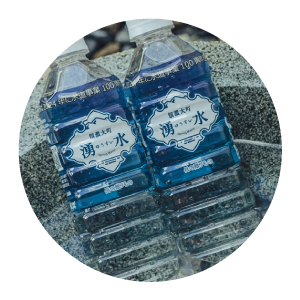
Omachi City Water and Sewerage Department


The tap water that supports life in Omachi City is sourced from springs. While tap water requires disinfection treatment as mandated by the Water Supply Act, the minimal treatment means that turning on the tap in Omachi City provides water that is almost as pure as spring water.
"Most of Japan's tap water comes from dam reservoirs, and in Nagano Prefecture, many areas use water from rivers and wells. Omachi City, however, uses spring water, which is very rare nationwide," explained Ms. Mari Saito from the Water and Sewerage Department.
Omachi City has a total of 27 water sources, both large and small, and the tap water is mostly supplied from the four main sources. These include the Shirasawa, Kami-Shirasawa, and Yazawa sources originating from the Northern Alps, as well as the Iyari water source located in the hilly area on the eastern side of Lake Kizaki. Among these, the Iyari water source is the oldest, established in 1924 during the Taisho era.
The water sources are all at high altitudes, and the water flows naturally without the use of pumps. "In fact, some places have pressure-reducing tanks because the flow is too strong," says Ms.Saito. Since the spring water is very clean, there is no need for large purification facilities, and water is supplied through minimal facilities such as chlorine disinfection.
"The deliciousness of water depends not only on its quality and the amount of residual chlorine but also on its temperature. Spring water remains around 10°C throughout the year. The water in Omachi is cold and delicious."
Ms. Saito was born and raised in Omachi. She mentions that she became aware of the deliciousness of the local water when she lived outside the city after graduating from high school. She says, "People who have recently moved here often appreciate the quality of the water more than those who have lived here for a long time and are often impressed by it."
The main street running through the town is the old Chikuni Highway, and it divides the area into the Iyari water system on the east side and the Kami-shirasawa water system on the west side. The east side is called "Onna-mizu" (female water) and the west side is called "Otoko-mizu" (male water). Both are extremely soft water. However, someone has opened a coffee shop on the east side due to the subtle differences in taste.
Going back in history, from ancient times, the fields and rice paddies were cultivated using the water from the Nishina Three Lakes, and the cold water from the Kashima River and the spring water from Iyari was drawn during the Muromachi period*, laying the foundation for the present town.
*Muromachi Period : 1336-1573
As you walk through the town, you can hear the gentle babbling of water here and there, and water points are well-maintained. When you turn on the tap, spring water flows out. The pure and clear water flowing through the enduring nature and history nourishes life in Omachi.
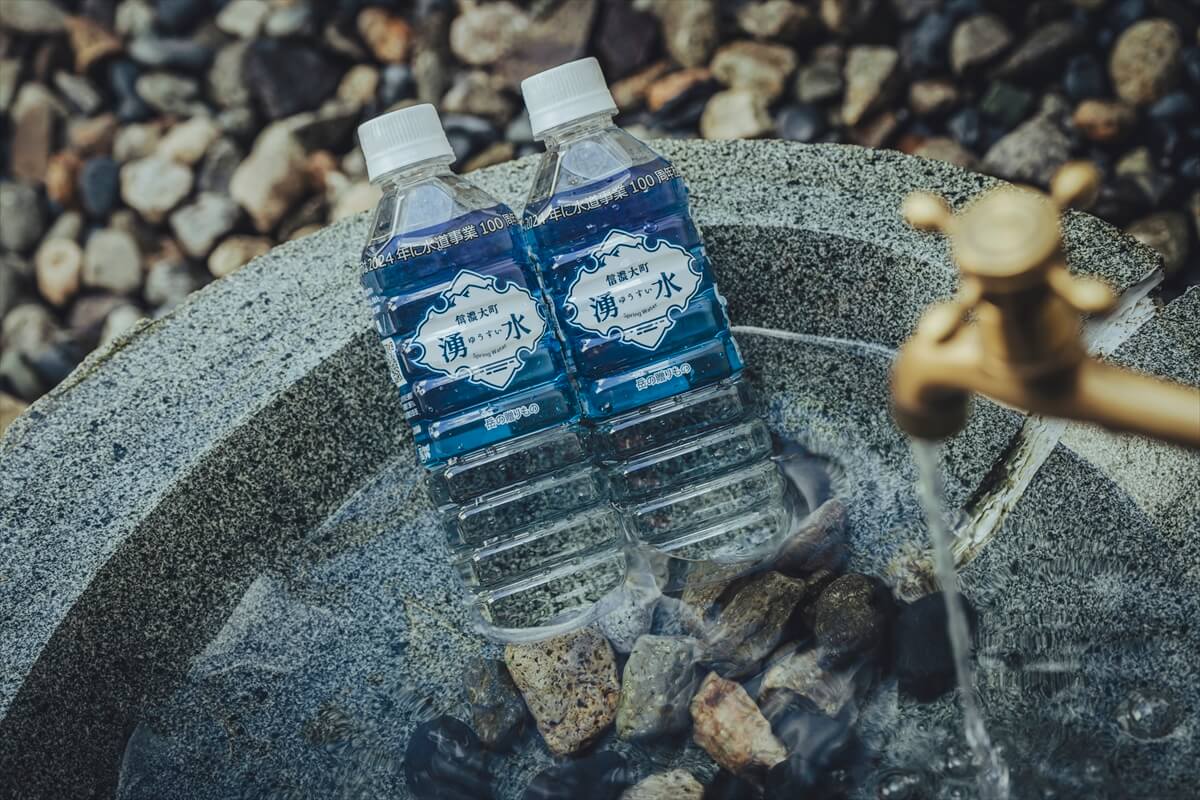
Bottled water from Omachi. It marks exactly 100 years since the waterworks became available in Omachi City in 2024.
(Both text and data as of December 31, 2023)

Bottled water from Omachi. It marks exactly 100 years since the waterworks became available in Omachi City in 2024.
(Both text and data as of December 31, 2023)
\Click here for tour details and application/
Click here for tour details and application


